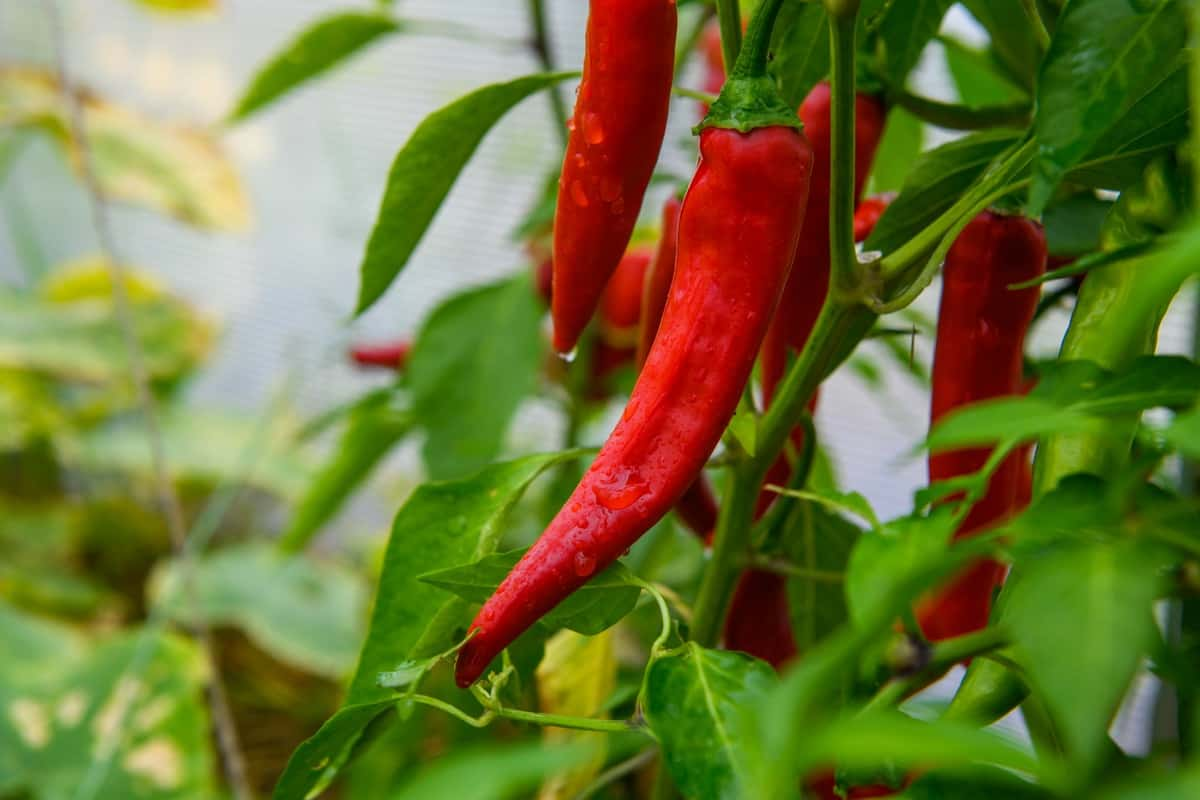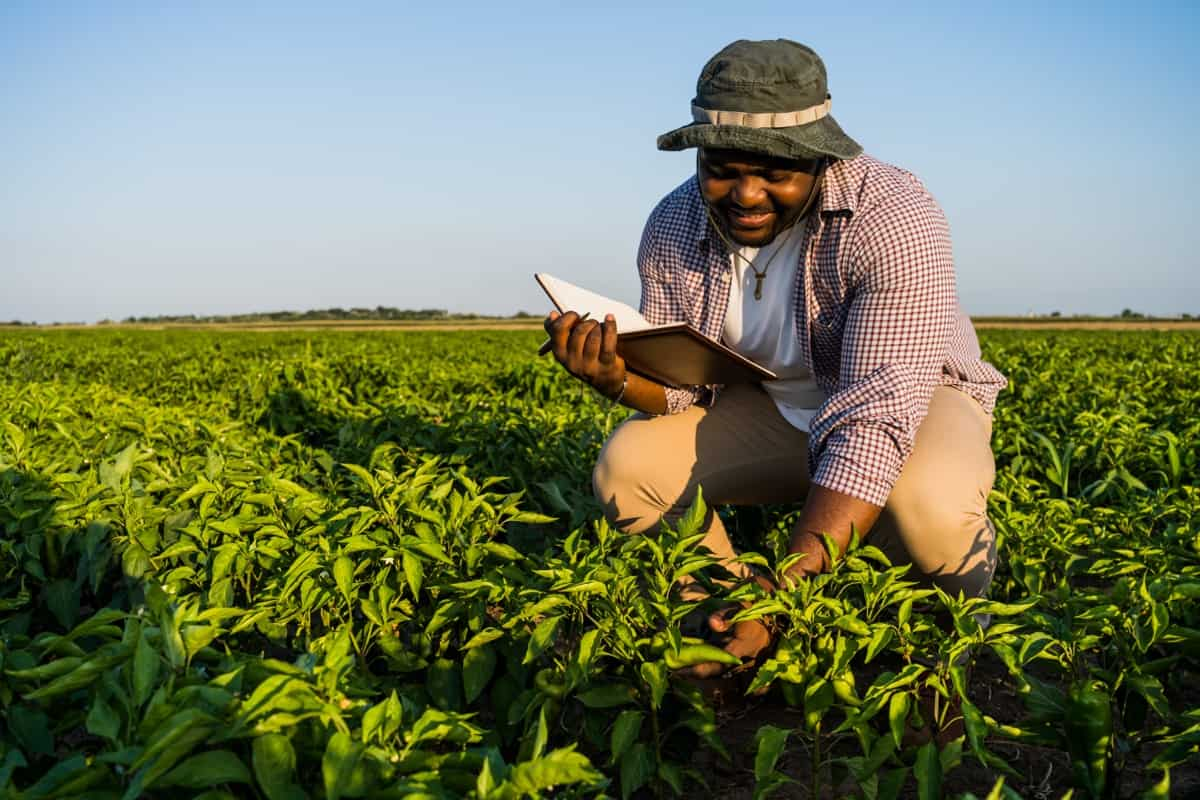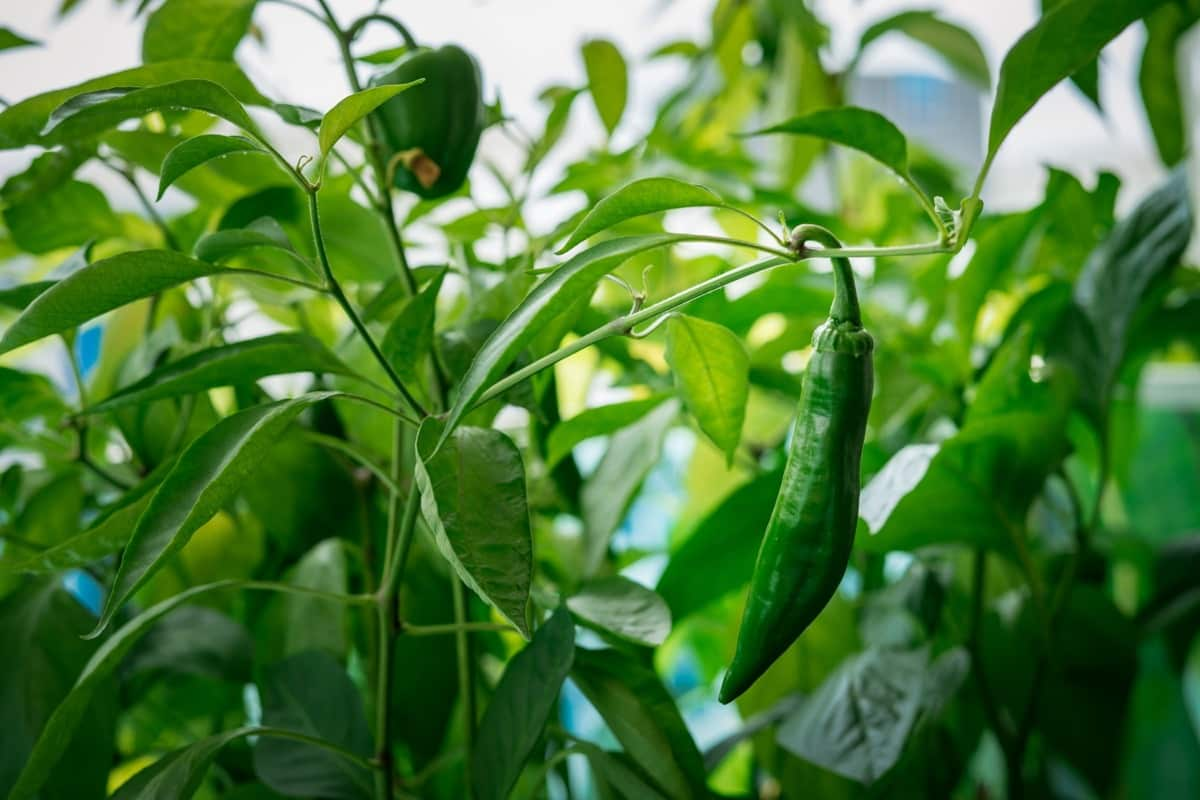Dieback and anthracnose (fruit rot) are two major chili plant diseases. The dieback disease causes the plant to wilt and dry up, eventually leading to the death of the plant. On the other hand, anthracnose is a fruit rot disease that affects the fruit of the chili plant. It causes dark, sunken lesions on the fruit, which can lead to the complete decay of the fruit.

The main cause of these diseases is the fungus Colletotrichum spp., which thrives in warm and humid conditions. Maintaining sanitation and removing diseased plants and debris from the field helps handle infection. Crop rotation, resistant types, and fungicides are also effective. Proper watering and fertilization also reduce plant stress and disease susceptibility. Farmers should also watch their fields for disease and act soon to prevent it.
Dieback and Anthracnose (Fruit Rot) Management in Chilli
Cause of Dieback and Anthracnose (Fruit Rot)
- Dieback and Anthracnose (Fruit Rot) are caused by the fungus Colletotrichum capsici.
- The fungus grows both inter and intracellularly in the host tissue
- Asexual fruiting bodies, acervuli, contain many brown-colored setae with multiple septa.
- Each acervulus contains many falcate, hyaline conidia with truncated bases.
- Conidia appear pinkish in mass and are borne singly at the tip of conidiophores.
The Disease Cycle of Dieback and Anthracnose (Fruit Rot)
The disease cycle of Dieback and Anthracnose (Fruit Rot) begins with the fungus being seed-borne. Secondary infections occur through the air-borne conidia, which wind-blown rains can spread during the rainy season. Flies and other insects can also spread the spores from one fruit to another. The fungus may not survive long in the soil but can survive on dead twigs stored under dry conditions. Primary inoculum is present in infected seeds and diseased crop debris, while secondary inoculum is dispersed by rain splash and wind-blown conidia.
Favourable Conditions for Dieback and Anthracnose
Dieback and Anthracnose (Fruit Rot) can occur under certain favorable conditions, which include a temperature of 28°C or higher, high humidity with RH of more than 97%, and frequent rainfall. These conditions provide a suitable environment for the fungus to grow and infect the chili plants. In addition, intercropping with turmeric, another fungus host, can increase the risk of infection. Heavy and prolonged dew deposition after the rainy season can also create favorable conditions for the fungus to thrive.
Damage Symptoms of Dieback and Anthracnose (Fruit Rot)
Dieback Symptoms
- Brownish-black spots appear on the leaves, leading to severe defoliation.
- Infection of growing tips leads to necrosis of branches from the tip backward.
- Grayish-white necrotic tissues with black dot-like acervuli in the center.
- Shedding of flowers due to the infection at the pedicel and tips of branches.
- Severely infected fruits shrivel and dry up.
- Fruits appear straw-colored, with bleached tissues around the lesions.
- Seeds produced in severely infected fruits are discolored and covered with a mycelial mat.
In case you missed it: Management of Beet Armyworm in Spinach: Symptoms, Treatment, Chemical, Biological, Natural, and Organic Control

Ripe Fruit Rot Symptoms
- Small dark circular spots on the fruit’s skin that extend along the fruit’s long axis and become elliptical.
- Sunken spots with black margins, covered with a pinkish mass of fungal spores
- Badly diseased fruit turn straw-colored
- The fruits with many spots drop off prematurely, resulting in heavy yield loss
- This fungus can also infect seeds.
Yield Loss due to Dieback and Anthracnose (Fruit Rot) on Chilli
Dieback and Anthracnose (Fruit Rot) caused by Colletotrichum spp. can cause significant yield loss in chili crops. Reports from different countries say that yield losses can be anywhere from 10% to 80% hardest hit, losing up to 50% of its yield. The fungus primarily infects the fruit, stem, and leaves, leading to dieback and ripe fruit rot.
The severity of the infection can result in necrosis of tender twigs, defoliation of leaves, shedding of flowers, and the shriveling and drying of fruits. In addition, the fungus can cause the bleaching of tissues and loss of pungency in the affected area and even infect the seeds produced in severely affected fruits.
Dieback and Anthracnose (Fruit Rot) Management in Chilli by Cultural Method
- Crop rotation with non-host plants
- Removal of infected plant parts and debris
- Avoiding overhead irrigation and excess moisture
- Application of organic matter like compost and manure to improve soil health
- Planting in well-drained soil and proper spacing of plants
Dieback and Anthracnose (Fruit Rot) Management in Chilli by Biological Method
- Biological control agents like Trichoderma harzianum, T. viride, and Pseudomonas fluorescens effectively control the disease.
- Applying these biocontrol agents as a seed treatment or soil application has significantly reduced the incidence of anthracnose disease in chili.
- T. harzianum and T. viride are the most commonly used biocontrol agents for chili diseases.
- T. harzianum is known for its ability to produce various antifungal metabolites that inhibit the growth of Colletotrichum spp.
Dieback and Anthracnose (Fruit Rot) Management in Chilli by Chemical Method
- Dieback and Anthracnose (Fruit Rot) in Chilli through chemical methods, it is important to use disease-free seeds.
- Treating seeds with Thiram or Captan 4g/kg eliminates the seed-borne inoculum.
- Spraying with Ziram O. 25%, Captan 0.2%, or miltox 0.2% three times has been found to control the disease well.
- Wettable sulfur 0.2%, copper oxychloride 0.25%, and Zineb 0.15% are also effective in reducing disease incidence and increasing the yield of fruits.
- The first spraying should be given just before flowering, the second at the time of fruit formation, and the third after two weeks of the second spraying.
Dieback and Anthracnose (Fruit Rot) Management in Chilli by Organic/Natural Method
- Organic methods for controlling Dieback and Anthracnose in Chilli include using hot water treatment to eliminate infected seeds.
- Infested seeds can be soaked in 52°C hot water for 30 minutes, and the temperature and time should be precisely controlled to ensure the desired effect of the treatment.
- Crop rotation and intercropping with non-host crops such as legumes and cereals can help prevent the disease from spreading.
In case you missed it: Spider Mite Management in Tomato: Symptoms, Treatment, Chemical, Biological, Natural, and Organic Control

Preventive Measures for Control of Dieback and Anthracnose (Fruit Rot)
Preventive measures for control of dieback and anthracnose (fruit rot) in Chilli include applying manure to the soil, ensuring good drainage, using mulch, growing resistant varieties, using healthy seeds, checking seedlings, monitoring fields, removing weeds, avoiding overhead irrigation, balancing fertilization, burning plant waste after harvest, and rotating crops except with other pepper, tomato or strawberry crops.
Conclusion
Dieback and anthracnose are major diseases affecting chili plants, causing significant yield loss. Identifying symptoms and timely treatment using chemical, biological, natural, or organic methods can effectively manage the diseases. Cultural practices and preventive measures can also help control disease spread.
- Beneficial Insects in Pest Management
- Natural Solutions for Pest Control in Flower Gardens
- Types of Fungicides Used in Agriculture
- Common Issues in the Fruit Development Stage of Pomegranate Farming
- Fruit Development Issues in Papaya: Easy Solutions and Treatment
- Soil-Borne Diseases and How to Protect Your Plants
- Practices to Prevent Disease Spread in the Garden
- From Wilted to Thriving: How to Treat Root Rot Naturally in Houseplants
- Natural Remedies to Cure Brown Spots on Fig Tree Leaves